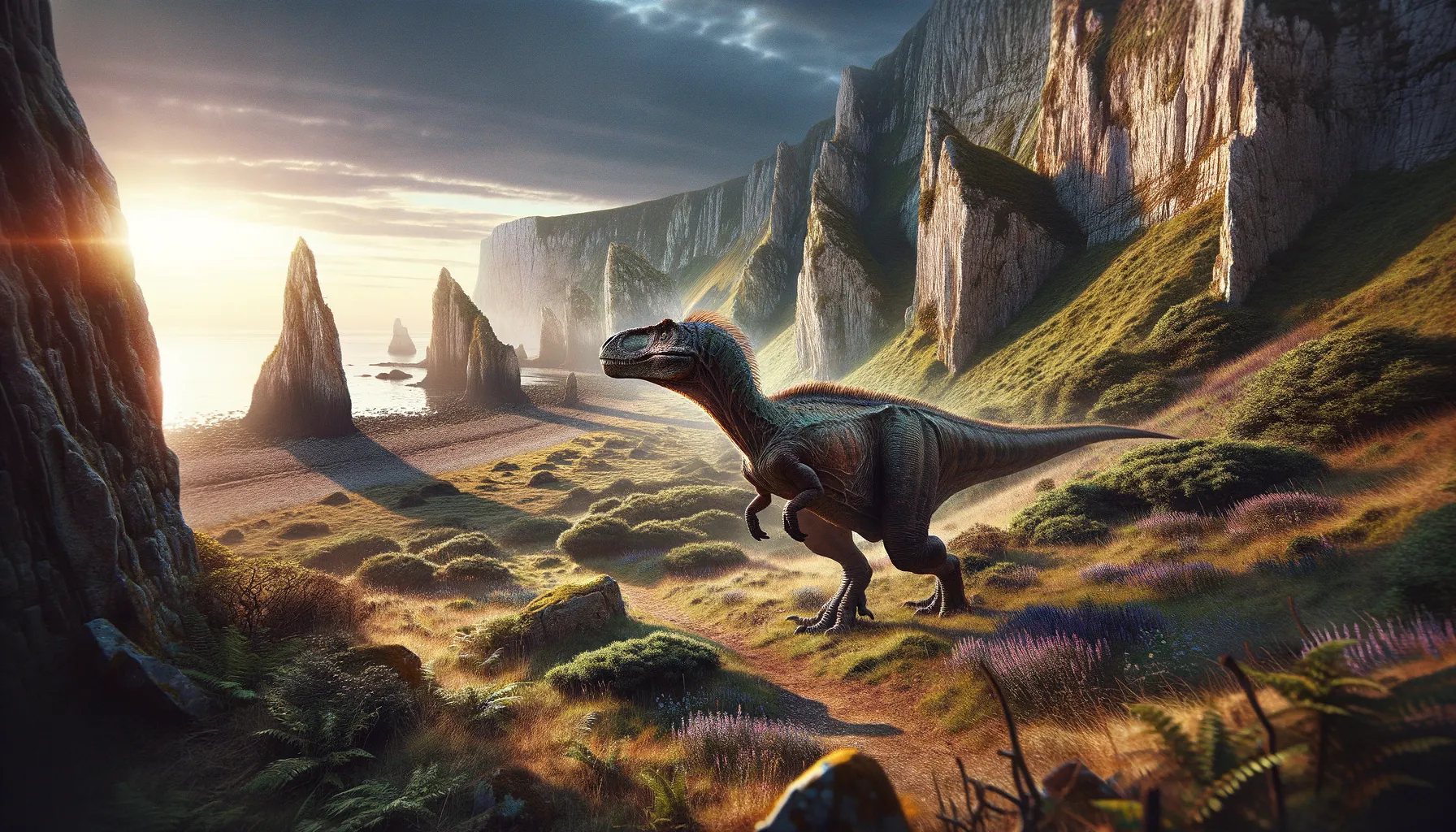
Neovenator
Swift hunter of the Cretaceous era!
Period
Cretaceous
Length
Close to 7 meters long.
Height
Approximately 2.5 meters at the hip.
Weight
Around 1000 kilograms.
Neovenator is a fascinating predator that roamed Europe during the early Cretaceous period. This theropod dinosaur was discovered in the Isle of Wight, England, earning a place in paleontology as one of the prominent carnivores of its time. Known for its size and agility, Neovenator provides valuable insights into the lives of dinosaurs transitioning towards bird-like traits, which has been the focus of many studies exploring the evolution of theropods.
Diet
Neovenator was a carnivore, primarily preying on other dinosaurs. Its sharp teeth and claws were ideal for hunting large herbivores. It likely consumed meat exclusively, thriving in a diet rich in protein.
Hunting
Neovenator utilized its agility and speed to pursue prey. Its hunting behavior suggests it may have ambushed prey, using the element of surprise for a successful catch. Group hunting is possible, but evidence is not conclusive.
Environmental challenges
During its time, Neovenator faced environmental challenges such as changes in climate and sea levels. Fluctuations in food availability due to these changes might have affected its survival strategies. Competition with other predators of the time was also a significant challenge. Adaptation to these challenges was essential for its survival.
Speed
Its speed was moderate, suitable for a predator.
Lifespan
Estimated between 20 to 30 years.
First discovery
Discovered on the Isle of Wight, England, in 1978.
Fun Facts
- Neovenator means 'new hunter' and was discovered on the Isle of Wight in the UK.
- This dinosaur lived about 125 million years ago during the early Cretaceous period.
- Neovenator was a medium-sized theropod, estimated to be around 7.5 meters long.
- It was one of the top predators in its ecosystem, likely preying on other dinosaurs and large animals.
- The first fossils of Neovenator were discovered in the 1970s by an amateur fossil hunter.
- Unlike some other meat-eating dinosaurs, Neovenator had more delicate, blade-like teeth.
- Parts of Neovenator's skeleton, particularly its hands and feet, are still not completely known.
Growth and Development
Neovenator grew rapidly during its early years to reach a size where it could compete effectively for food. Its growth might have been similar to modern birds, with a fast rate followed by a plateau upon reaching maturity. Juveniles had to learn hunting skills early to ensure survival.
Habitat
Neovenator inhabited forested environments and coastal areas. These habitats provided ample opportunities to hunt various prey. The presence of water sources likely supported a diverse ecosystem, enhancing its chances of finding food. Dense vegetation offered excellent cover for stalking prey.
Interaction with other species
Neovenator interacted with both prey and competing predators. It likely dominated smaller predators but faced challenges from larger ones. Its interactions were marked by both competition and predation. Cooperative behaviors with others of its kind were possible but not extensively proven.
Natural lifespan
In the wild, Neovenator lived for approximately 20 to 30 years.
Reproduction
Neovenator likely reproduced seasonally, laying eggs in nests. Parental care might have been minimal; however, guarding eggs was crucial for offspring survival. Hatchlings were likely vulnerable, relying on rapid growth to evade predators.
Social behaviour
While it may have hunted alone, some evidence suggests occasional group interactions. Social hierarchies could have existed among Neovenators, especially in competitive contexts. Their social behavior remains largely speculative, relying on limited fossil evidence.
Fossil locations
Neovenator fossils have primarily been found on the Isle of Wight in England. These findings have provided significant insights into its anatomy and lifestyle. Little evidence exists of its presence elsewhere. The Isle of Wight remains a crucial site for studying Neovenator and its contemporaries.
